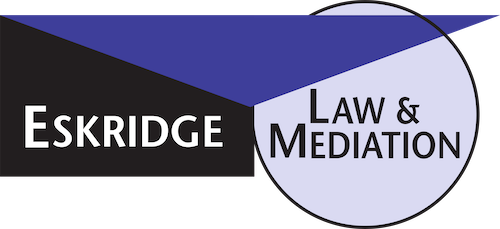August 6, 2019
An easement is an interest in the land of another that entitles the easement owner to a limited use or enjoyment of the other’s land. [Camp v. Meeker Water System, Inc. v. Public Utilities Com. (1990) 51 Cal.3d 845, 865; Mosier v. Mead (1955) 45 Cal.2d 629, 632.]
The owner of the legal title to property is presumed to be the owner of the full beneficial title. This presumption may be rebutted only by clear and convincing evidence. This means that, in order to establish a prescriptive easement, the person who is seeking to establish a prescriptive easement must prove all the required elements by clear and convincing evidence. [Evid. Code §§ 605, 662; Miller v. Johnston (1969) 270 Cal.App.2d 289, 294; Nelson v. Robinson (1941) 47 Cal.App.2d 520, 528, citing 1 Cal.Jur. 636, § 95; Field-Escandon v. DeMann (1988) 204 Cal.App.3d 228, 235, citing Applegate v. Ota (1983) 146 Cal.App.3d 702, 708; Pacific Gas & Electric Company (1975) 45 Cal.App.3d 519, 532; San Juan Gold Co. v. San Juan Ridge Mut. Water Ass’n (1939) 34 Cal.App.2d 159.]
In order for someone to prove they have a prescriptive easement, they must prove, by clear and convincing evidence, that:
- They and their predecessors in interest used the alleged easement area in a manner which was adverse and hostile to the owner of the property;
- The use which they made of the alleged easement area was continuous and uninterrupted for more than five years; and
- The owner of the property had actual notice of the adverse use, or the adverse use was so open, unequivocal, obvious, and notorious that owner must have known about it.
[Code Civ. Proc. § 321; Civ. Code § 1007; Sufficool v. Duncan (1960) 187 Cal.App.2d 544, 549; Lindsay v. King (1956) 138 Cal.App.2d 333, 335-336; Gilardi v Hallam (1981) 30 Cal.3d 317, 321-322; Nelson v. Robinson (1941) 47 Cal.App.2d 520, 526; Hahn v. Curtis (1946) 73 Cal.App.2d 382, 389; Shelton v. Malette (1956) 144 Cal.App.2d 370, 376; Kraemer v. Kraemer (1959) 167 Cal.App.2d 291, 306; Miller & Starr, California Real Estate (3rd ed.) § 15:38, p. 15-144.]
A prescriptive easement is lost by at least five years of nonuse. In other words, even if a prescriptive easement did exist at some time, if the owner of the property shows that the prescriptive easement was not used for at least five years, then the prescriptive easement was extinguished, even if the property owner did not prevent anyone from using the prescriptive easement and even if the property owner did not use the easement itself. [Code Civ. Proc. § 321; Civ. Code § 811(4); People v. Ocean Shore R. (1948) 32 Cal.2d 406, 419; 12 Witkin, Summary of California Law (10th ed. 2005) Real Property, § 424, p. 496; Miller & Starr, California Real Estate (3rd ed.) § 15:38, p. 15-252.] Also, the person seeking to establish a prescriptive easement must prove, by clear and convincing evidence, that the use which they intend to make of the alleged easement is the same as the actual use under which the alleged easement was used by their predecessors in interest. In order to determine whether this is the case, the jury would have to consider:
- The physical character of the proposed use of the alleged easement, compared to the use of their predecessors;
- The purpose of the proposed use of the alleged easement, compared to the use of their predecessors; and
- The relative burden caused to the property owner by the use of the person seeking to establish the prescriptive easement, compared to the use of their predecessors.
The nature, scope, and extent of the use in question must not substantially increase the burden placed on the property owner’s property as it existed during the prior use during the prescriptive period. [Civ. Code § 806; Camp v. Meeker Water System, Inc. v. Public Utilities Com. (1990) 51 Cal.3d 845, 866-867; Neff v. Ernst (1957) 48 Cal.2d 628, 636; O’Banion v. Borba (1948) 32 Cal.2d 145, 153; Anderson v. Southern California Edison Co. (1926) 77 Cal.App. 328, 355; Sylva v. Kuck (1966) 240 Cal.App.2d 127, 135; Pipkin v. Torosian (1973, Fifth Dist.) 35 Cal.App.3d 722, 727; Hill v. Allan (1968) 259 Cal.App.2d 470, 484; Bartholomew v. Staheli (1948) 86 Cal.App.2d 844, 850, 851; Connolly v. McDermott (1984) 162 Cal.App.3d 973; 6 Miller & Starr 3d, section 15:58.]
Need more information?
ESKRIDGE LAW may be contacted by phone (310/303-3951), by fax (310/303-3952) or by email (geskridge@eskridgelaw.net.) Please visit our website at eskridge.hv-dev.com.
This article is based on the law as of the date posted at the top of the article. This article does not constitute the provision of legal advice, and does not by itself create an attorney-client relationship with Eskridge Law.
